
The Cincinnati Bengals are struggling with their run game this season (among other issues), but this hasn’t always been the case. Throughout their time in the NFL, there have been some truly great players to helm the position, as well as a lot of other players who were some of the best of their time.
Here’s a look at the top ten Cincinnati running backs of all time, including what they each contributed to the team, what records they set (and still hold), and honorable mentions. For reference sake, because the Bengals’ lack of great players at said position, a few of these players are listed as fullbacks, but were largely used as modern backs would be.
10. Icky Woods (1988-1991)
Although his career was cut short due to an ACL tear in his rookie season, Icky Woods is still in the top ten running backs in Bengals history. He posted 1,525 rushing yards, averaging 4.6 yards per attempt, and 41.2 yards per game across his four seasons in the NFL.
Woods was an exceptional talent and a big personality on the team. Responsible for the iconic “Icky Shuffle,” he was a force when he was able to play.
That’s the thing, though, as in his brief career, he only played in 10 or more games twice. Even still, when healthy, his size, speed, and cutting ability kept defenders struggling to both chase and bring him down.
While his career was brief, Woods remains one of the best pure talents to have ever played the position for Cincinnati. Even if his numbers only barely crack the top ten, his level of skill and personality have cemented him as a fixture of Bengals history and lore.
9. Essex Johnson (1968-1975)

A member of the inaugural Bengals’ team in 1968 was rookie Essex Johnson. Spending all but the final season of his career in Cincinnati, he posted 3,070 rushing yards, 1,541 receiving yards, 18 rushing touchdowns, and 11 receiving touchdowns.
Johnson was both versatile and consistent in most of his time with the team, even leading the NFL with the longest run (86 yards) and highest average scrimmage yards per touch (7.9) in 1971. He did not, however, shine in the postseason, playing in three games (1970, 1973, 1975) and posting a total of 17 yards on seven attempts.
Despite this, Johnson comes in as the ninth-best RB to have played for this team. His varying skillset and regular-season reliability were staples of the very first era of Bengals football.
8. Harold Green (1990-1995)
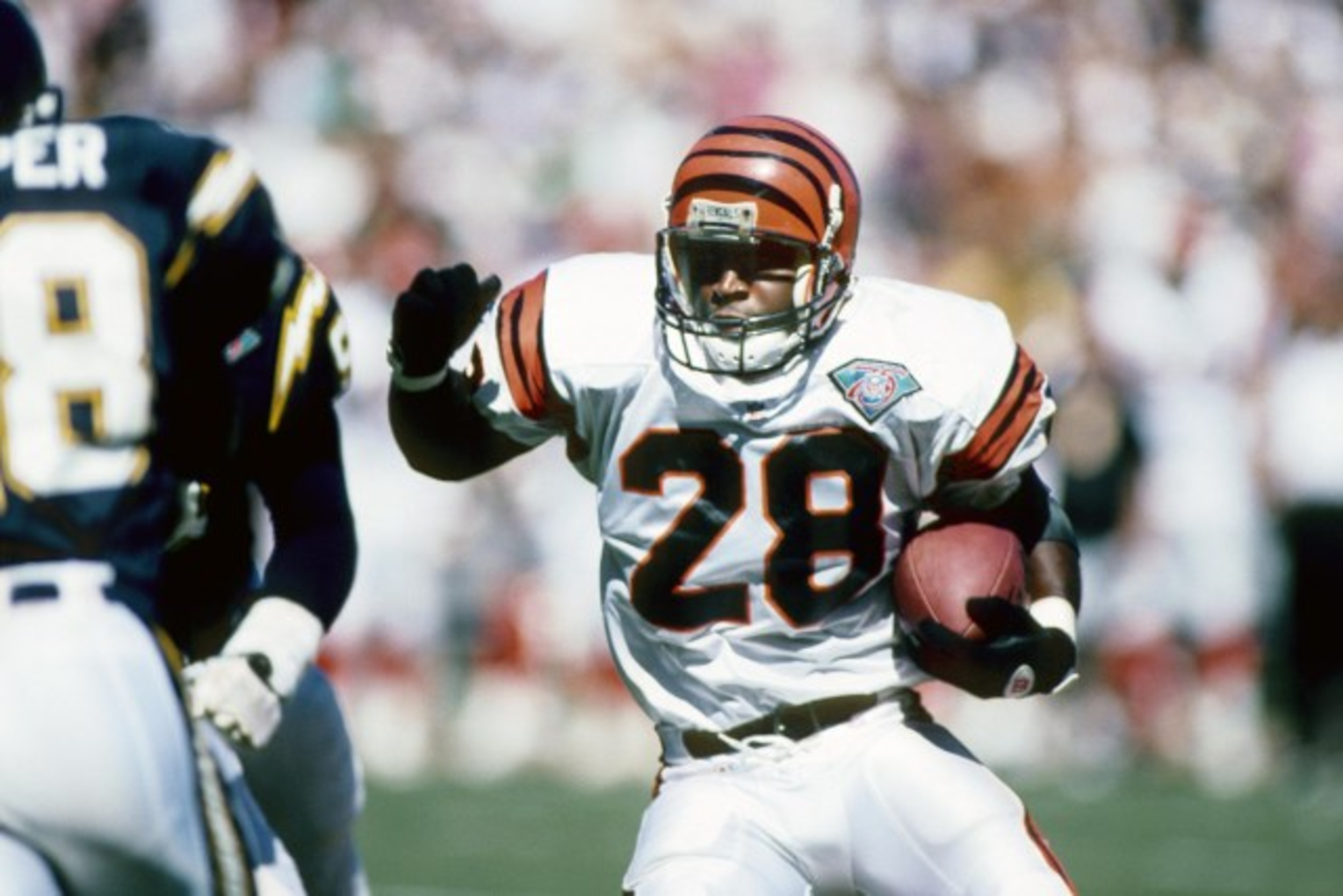
The Bengals’ running back for the first half of the 1990s, and coming in as the eighth best in franchise history, is Harold Green. He posted 3,727 rushing yards and eight touchdowns, averaging 3.9 yards per attempt, and 43.3 yards per game while in Cincinnati.
Green was also a receiving threat, accruing 1,004 receiving yards, averaging 6.9 yards per reception, and three touchdowns. He crossed the single-season rushing mark of 1,000 yards once in 1992, which is the first and only time he was selected for the Pro Bowl.
While Green’s numbers aren’t exactly anything special, he was still a fixture of this team as they tried to find their footing after losing Boomer Esiason. With a franchise largely lacking an elite running game, though, he finds himself as one of the ten best to have played with the Bengals.
7. James Brooks (1984-1991)
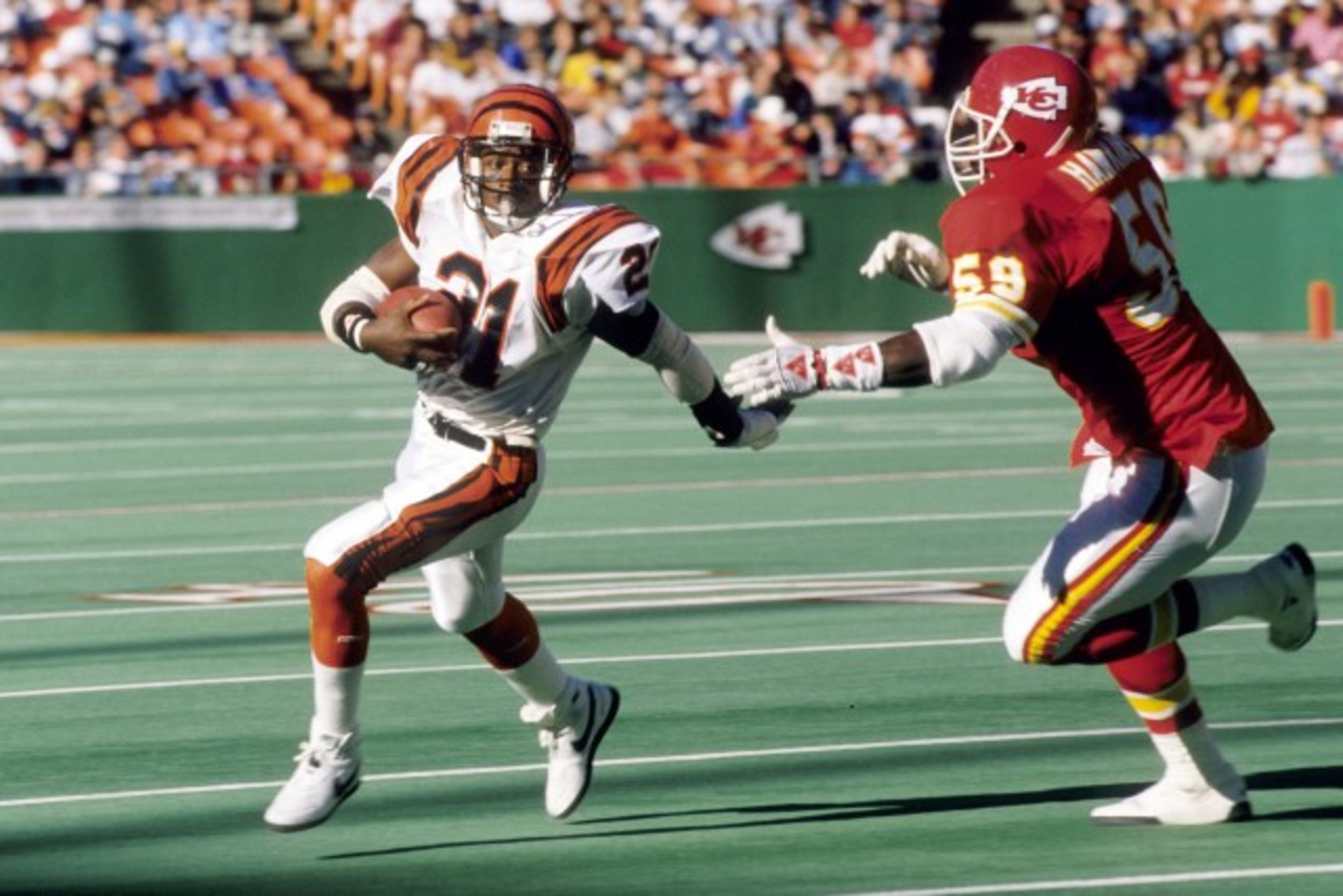
A big part of Cincinnati’s second Super Bowl run in 1989, and the seventh-best running back in franchise history, is James Brooks. He posted 6,447 rushing yards (second-most in franchise history), 37 rushing touchdowns (fifth in franchise), and averaged 4.8 yards per attempt and 54.6 yards per game.
You may be asking yourself, with numbers like these, why isn’t Brooks higher on this list? The simple answer: ball security.
Brooks fumbled 31 times as a Bengal, which is the eighth-most in franchise history, and the most by any non-QB player. While his rushing numbers are great, this quantity of dropped possessions is impossible to ignore.
Despite the fumbles, Brooks was a monster with the ball and seemed near impossible to tackle at times, as he shook off defenders like loose pieces of tissue paper. He played well enough to easily earn a spot as a top ten franchise running back, even if his drops limit how high he can reach.
6. Giovani Bernard (2013-2020)
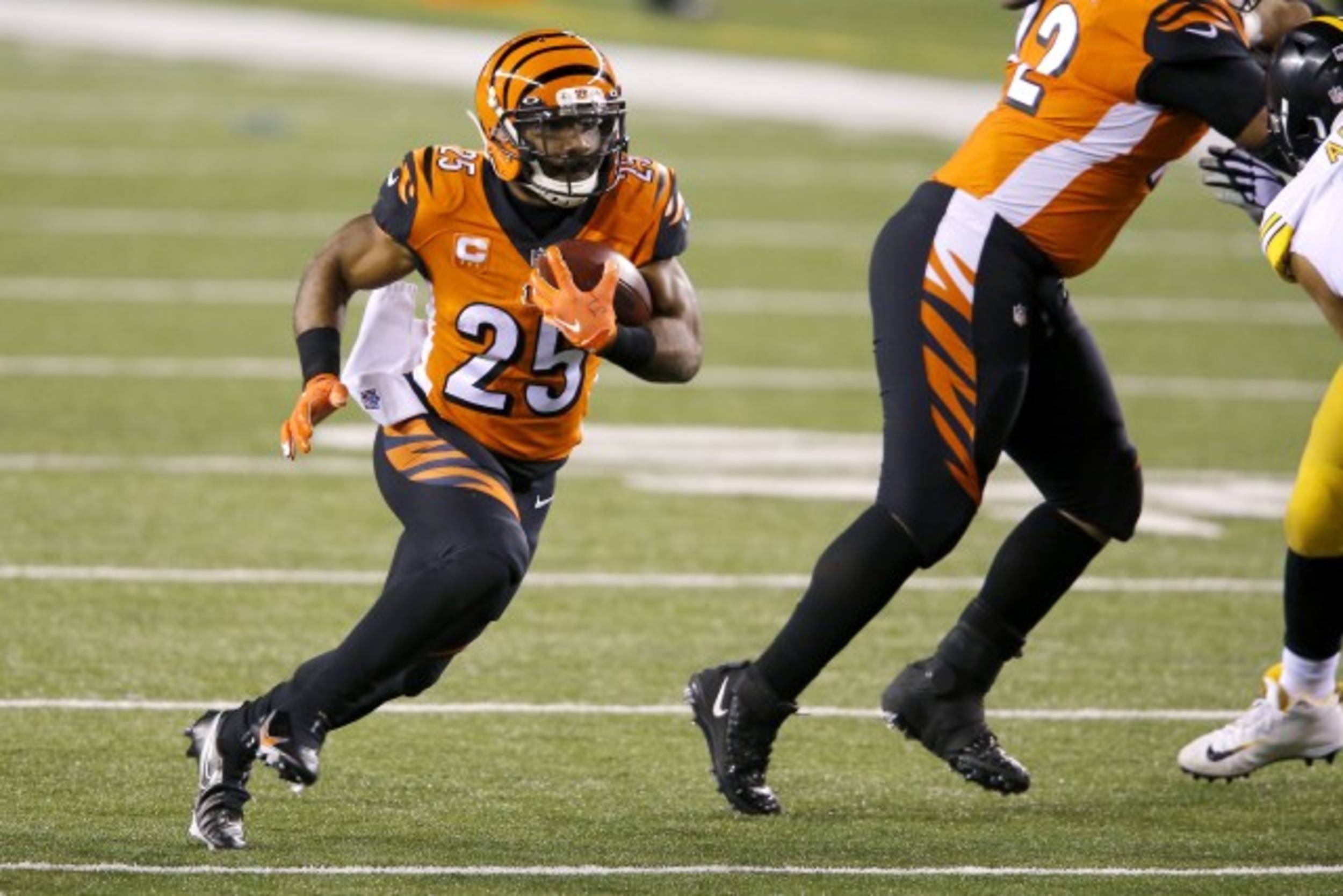
The definitive Bengals’ running back of the 2010s, and the sixth best in franchise history, is Giovani Bernard. While in Cincinnati, he rushed for 5,647 yards, 22 rushing touchdowns, 11 receiving touchdowns, and averaged 32.1 rushing yards per game.
Bernard was a fixture of this team’s backfield for the better part of a decade and, next to AJ Green, was one of the only steady contributors for that era. He was not only quick but also had the power to run over defenders to always gain a few extra yards.
Where Bernard really stands out, though, is his receiving ability. Behind Brooks, he has the second-most receiving yards for a Cincinnati RB ever, with 2,867, averaging 8.4 per reception.
5. Cedric Benson (2008-2011)
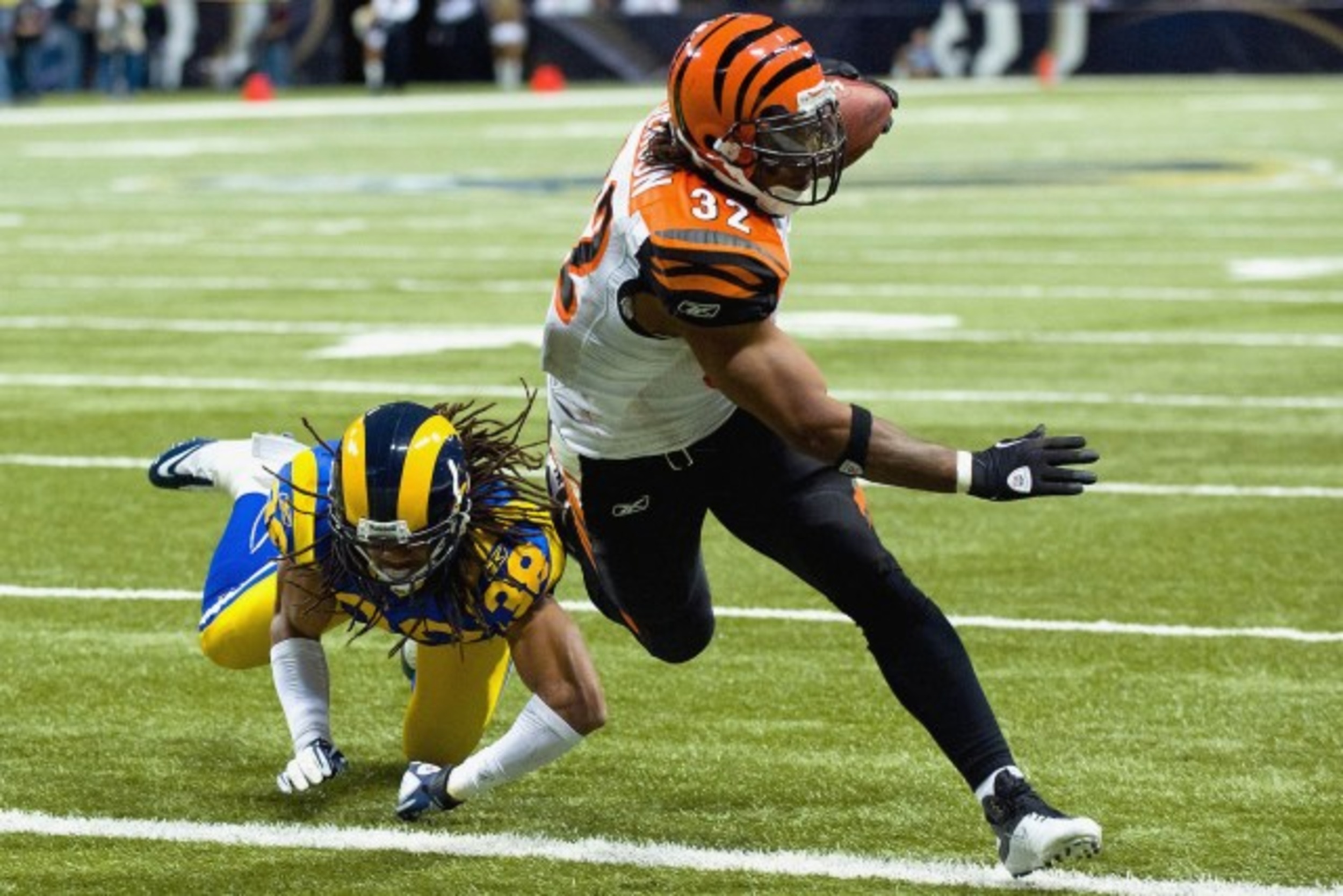
Although he only played four seasons with the Bengals (half of his career), Cedric Benson certainly made his mark in that time. While playing for Cincinnati, he posted 4,176 rushing yards (sixth-most in franchise history), 21 rushing touchdowns, and averaged 74.6 rushing yards per game.
Unlike Bernard, who routinely welcomed contact, Benson was a much quicker back who was more liable to break a run wide open. Sure, he could ping pong off guys from time to time, but his specialty was bursting through the line and zipping past defenders until he was alone with the endzone in his sights.
Despite only getting two chances to perform in the postseason with the Bengals, Benson still managed to impress with a league-leading 169 yards per game and eight yards per attempt in 2009. Regardless of his relatively short stint with the team and lack of postseason opportunities, he still managed to produce one of the better RB stat sheets that this franchise has seen.
4. Pete Johnson (1977-1984)
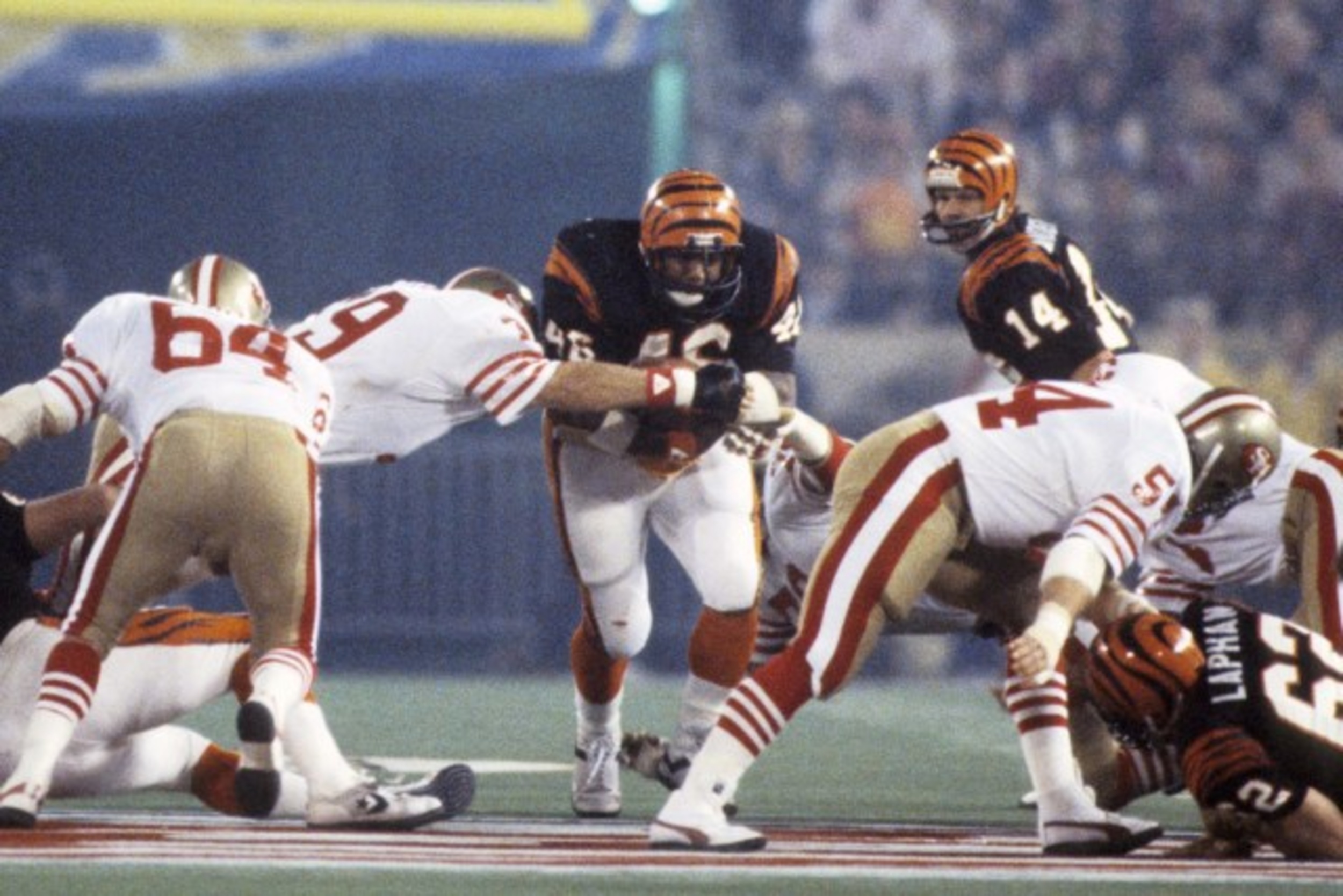
The fourth-best running back for the Bengals, and a big part of their first Super Bowl run in 1982, is Pete Johnson. While in Cincinnati, he rushed for 5,421 yards, represented the Bengals in the Pro-Bowl once (1981), and still holds the record for most career rushing touchdowns for the franchise at 64.
While he was technically a fullback, he had the running ability of a running back and was given the nickname “Touchdown Vulture” due to how often he was used in redzone situations. He also surpassed the single-season 1000-yard rushing mark and approached it in multiple other seasons.
The only real detractor from Johnson’s game was his ball security, as he fumbled 20 times as a Bengal. Despite this, his play has cemented him in the franchise’s record books, and he remains one of the very best to have played the position for this team.
3. Rudi Johnson (2001-2007)
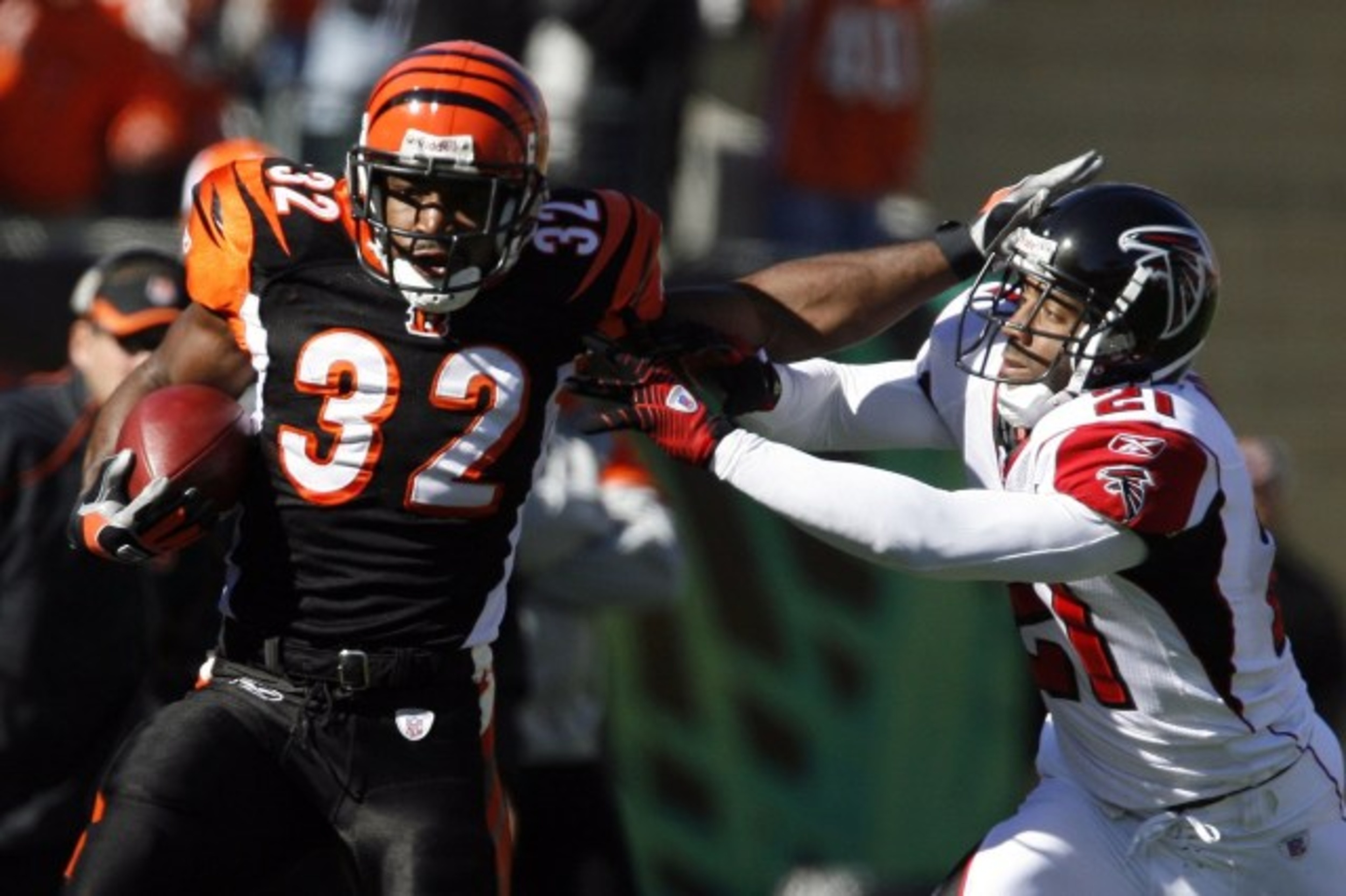
From one Johnson to another, the third-best running back in franchise history, and a major part of the 2000s Bengals, is Rudi Johnson. With Cincinnati, he rushed for 5,742 yards, 48 touchdowns, and holds the record for the most (1,458) and second most (1,454) single-season rushing yards for the franchise.
Johnson’s 48 touchdowns are the third most in franchise history (only one short of being tied for second), and he averaged four yards per attempt and 70.9 yards per game. Paired with Carson Palmer and his multiple weapons at receiver, Johnson was always liable to catch the defense off-guard with a big run, and was a consistent and reliable back.
Possessing the ability to both run through defenders like a freight train and spin around them with the footwork and precision of a ballerina hitting a pirouette, Johnson was a gifted running back. In his seven seasons with the team, including his 2004 Pro-Bowl performance, he’s cemented himself as one of the best three at the position to ever play for Cincinnati.
2. Joe Mixon (2017-2023)

Coming in as the second-best running back in Bengals history is Joe Mixon. He rushed for 6,412 yards, 49 touchdowns, and was a major part of this team’s 2021 Super Bowl run.
Mixon, although playing under a passing-first Joe Burrow offense, was a constant threat to break off a big run. In terms of career rushing yards and touchdowns, he ranks third and second in the franchise, respectively.
While Mixon struggled with having a terrible offensive line, inevitably making his job harder, he was still able to average 4.1 yards per attempt and 66.1 yards per game. What really stands out, however, is his ball security, as in his six years in Cincinnati, he only fumbled six times.
Mixon, now a Houston Texan and recovering from a potentially season-ending injury, is still a talented back, even if his best days are behind him. He is currently the second-best at his position that the team has ever had.
1. Corey Dillon (1997-2003)
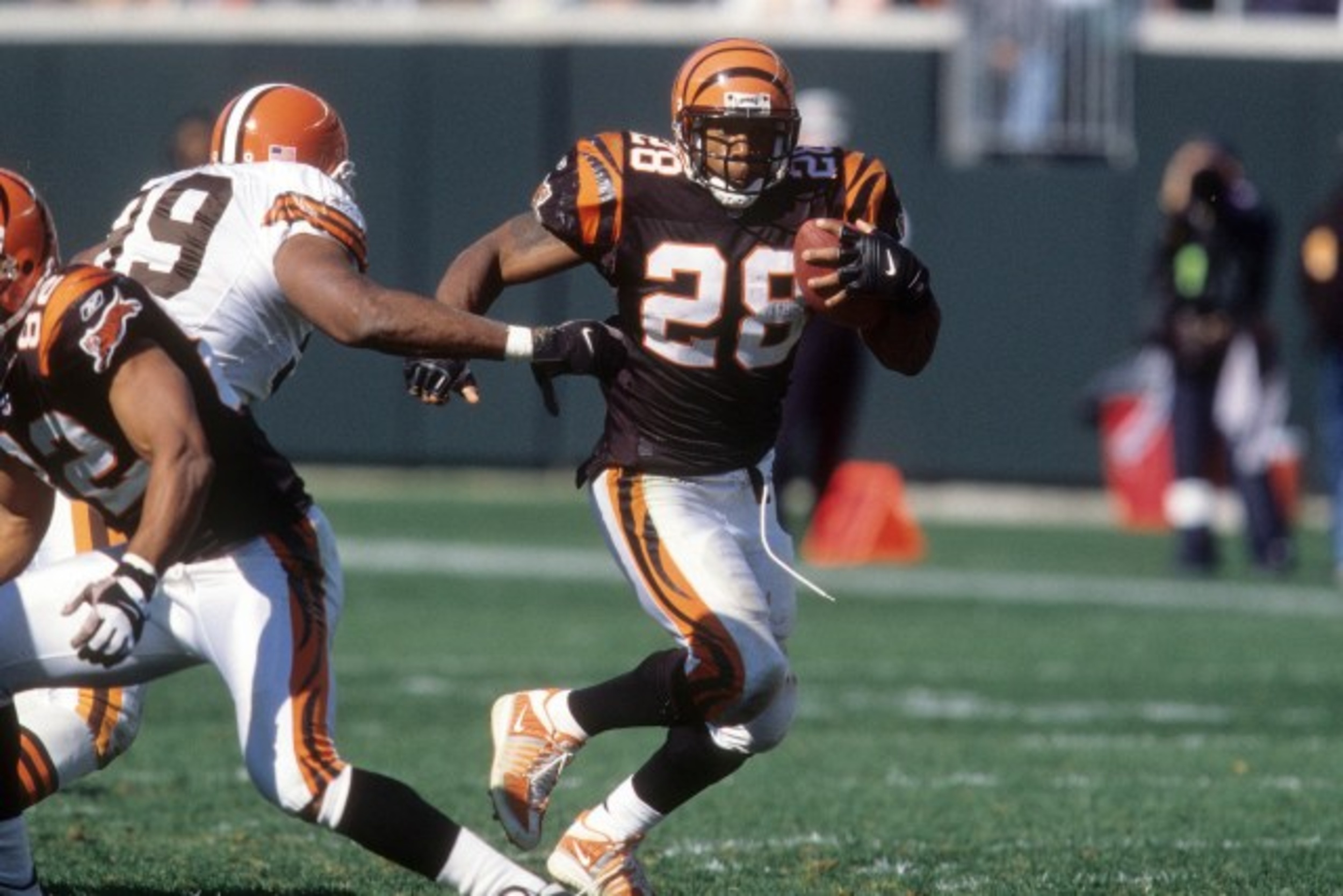
The best running back in Bengals history is Corey Dillon. With Cincinnati, he posted 8,061 rushing yards (franchise career-leader), 45 touchdowns, and averaged 75.3 yards per game.
Aside from being an absolute tank of a human being, Dillon also had blistering speed and a nasty stutter step. Behind Johnson, he holds the third (1,435), fourth (1,315), and fifth (1,311) highest single-season rushing totals for the Bengals.
During one of the franchise’s more inconsistent periods, Dillon stood out as a constant positive and was always a reliable option for the carousel of quarterbacks that played during his tenure. He may not hold the single-season rushing yards or TD records, but he is, without a doubt, the best running back to have played for this franchise, ever.
Bengals’ Honorable Mentions
Although there haven’t been too many great RBs for this franchise, there are still some who, despite not making this list, deserve to be mentioned for their time in the 513. These include Boobie Clark (1973-1978), Pete Johnson (1977-1984), Larry Kinnebrew (1983-1987), BenJarvus Green-Ellis (2012-2013), and the rapidly ascending Chase Brown (2023-Present).
End Of My Cincinnati Bengals Rant
Cincinnati has had a few great running backs, some really good ones, and a whole lot of duds. Even still, a few have managed to break through to be remembered as more than the best Bengals’ running backs, and simply some of the best of their respective eras. While Dillion is the clear-cut best to ever play for the franchise, guys like Mixon and (Rudi) Johnson were also able to make their own impressions on Cincinnati’s record books. After looking at the best wide receivers in Bengals history, followed by their best quarterbacks of all-time, these are the definitive running backs throughout the history of this franchise.
More must-reads:
- Jerry Jones addresses George Pickens' alleged lack of effort in Cowboys' loss to Lions
- Cardinals' Jonathan Gannon says plenty about future of Kyler Murray with QB shut down
- The 'Receiving leaders by NFL team' quiz
Breaking News
Trending News
Customize Your Newsletter
 +
+
Get the latest news and rumors, customized to your favorite sports and teams. Emailed daily. Always free!








